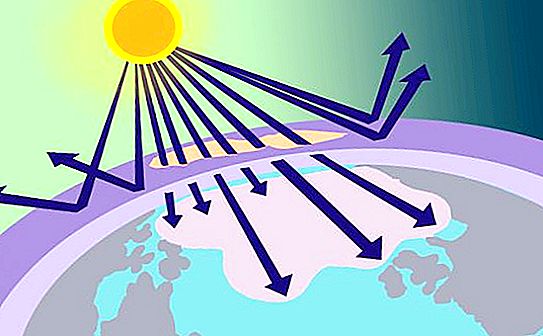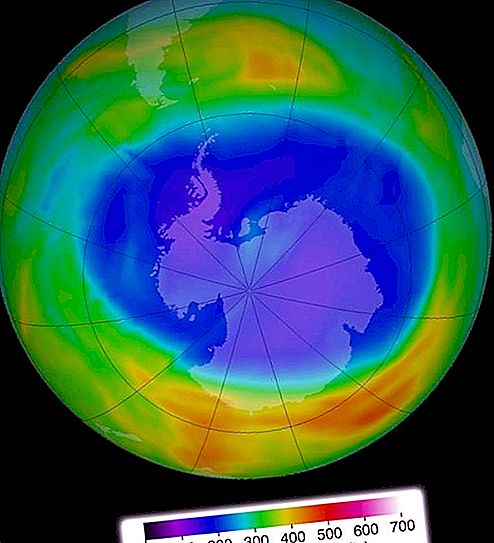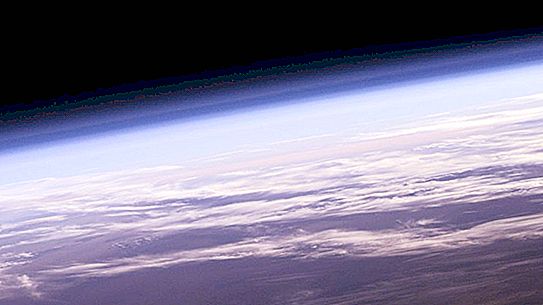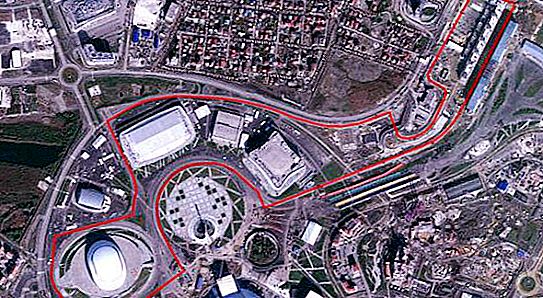The concentration of ozone in the atmosphere is unstable - this is a fact. Climatic phenomena are increasingly influenced by humans. The ozone layer above the high latitudes of the Southern Hemisphere is thinner than the average values on the planet - it is also difficult to argue with this. The rate of cancer among Australians is higher than among residents of other territories - also an indisputable statement.
How do myths come from facts? What to believe? Let's try to figure it out.

Life-saving ozone
The ozone layer in the Earth’s atmosphere is only 3%. But it was thanks to him that all life on our planet got a chance to exist. These are the “armor of God” that protects us from deadly ultraviolet radiation. The sun brings with it both life and death at the same time. The determining factor here is concentration.
The ozone molecule consists of three oxygen atoms. This molecule can form as a result of various chemical processes. Most often in nature, this happens when an oxygen molecule is exposed to ultraviolet radiation. The main thing here is the wavelength. At an altitude of 15–20 km from the earth’s surface, oxygen molecules in the atmosphere, under the influence of ultraviolet radiation with a certain wavelength, decay into oxygen atoms. Of these, ozone molecules are formed. And they, in turn, absorbing ultraviolet waves of a different length, are again converted into oxygen. And the cycle starts again.
The ozone layer is constantly being restored. For existence, it needs oxygen and ultraviolet radiation, the concentration and intensity of which we cannot influence today.
Why is the ozone hole over Australia so called?
Atmospheric ozone is measured in Dobson units. The average figure on the planet is about 300. A value below 220 units is considered critically low or abnormal. Sites of the atmosphere with such indicators are called a "hole". This is a journalistic image, of course, there is no gap in the atmosphere.
The study of the ozone layer began in 1912, when it was described by Charles Fabry and Henri Buisson as part of the stratosphere. The first abnormal phenomenon, which we call the ozone hole over Australia, was discovered in 1957. Then this news went unnoticed. Nearly thirty years later, in 1985, a group of scientists led by Joe Farman published the results of their studies of the atmosphere over the South Pole. The ozone hole over Australia and Antarctica at that time had a diameter of 1, 000 km and was equal in area to the United States. The world perceived this as an environmental threat. For thirty years of observation, the ozone concentration did not exceed 220 Dobson units and fell to 80 units. In the same 1985, Sherwood Rowland and Mario Molina proved the destructive effect of chlorine on ozone molecules.
And the world began to fight for the preservation of the ozone layer of the Earth, especially since the ozone hole over Australia and New Zealand was not the only one. An abnormally low ozone content was recorded in the northern and temperate latitudes of the globe. Over the Arctic, the area of the ozone hole is defined at 15 million km 2 - not much less than over Antarctica. “Enemy” declared everything that could in any way release chlorofluorocarbons into the atmosphere - refrigerators and aerosols.
In 1987, the Montreal Protocol on the Protection of the Ozone Layer was signed. Over the past 30 years, emissions of harmful substances into the atmosphere have decreased by 8 times. By the end of the century, the Australian ozone hole will remain only in the memory of mankind as an example of its unreasonable attitude to nature.
Ozone holes were, are and will be
There is an alternative point of view. Some scientists consider the existence of an ozone hole a natural climatic phenomenon that occurs in the atmosphere over any territory. Only in the northern and temperate latitudes the “life” of the hole does not exceed two weeks, and the ozone hole over Australia for 3-6 months keeps a minimum of ozone concentration.
The arguments in favor of human innocence in the appearance of ozone holes are as follows:
- The amount of artificial chlorfreon is negligible. Even if you break down all the refrigerators, its concentration will be several times less than what is released into the atmosphere during volcanic eruptions.
- Large ozone bald spots are located over areas with minimal anthropogenic impact. The mass of chlorfreon molecules is very large, and they could not be brought by wind from Europe and Asia to Antarctica.
- The density and number of stratospheric clouds above the poles is much higher than over the rest of the territories. They reduce the intensity of ultraviolet radiation and, as a result, the formation of ozone.
- The high number of oncological diseases is explained by the fact that Australia is located where a very high value of total solar radiation is geographically determined. Moreover, more than 90% of the population are descendants of immigrants from northern Europe and Great Britain who are not genetically adapted to such an intensity of solar radiation. There are no cancer statistics among Aboriginal Australia.







